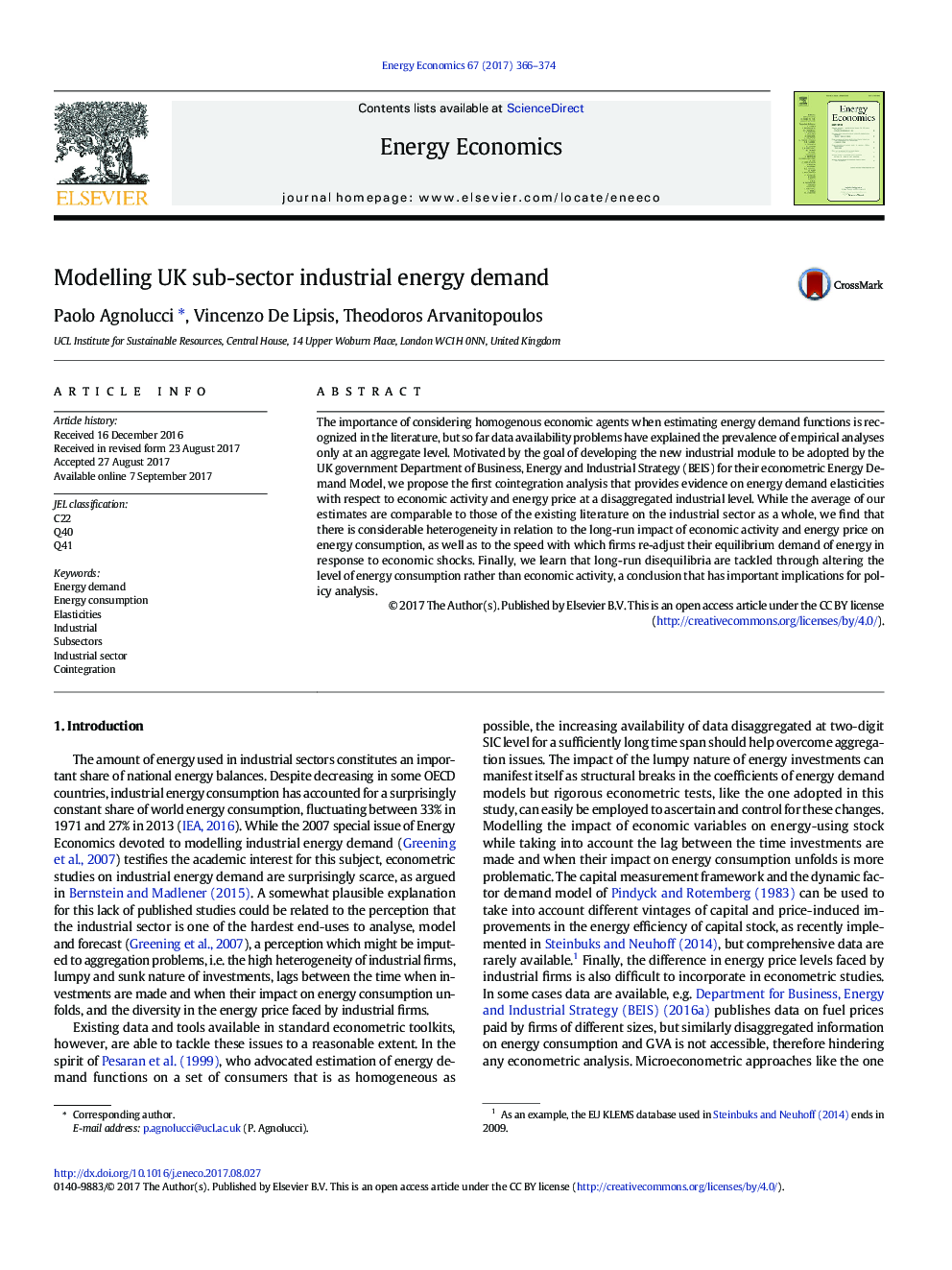| کد مقاله | کد نشریه | سال انتشار | مقاله انگلیسی | نسخه تمام متن |
|---|---|---|---|---|
| 5063581 | 1476697 | 2017 | 9 صفحه PDF | دانلود رایگان |
- First cointegration analysis that provides evidence on energy demand elasticities at a disaggregated industrial level - analysing UK industrial subsectors, using data between 1990 and 2014
- We discovered considerable heterogeneity in the long-run impact on energy consumption of economic activity (between 0.12 and 1.42) and energy price (between -0.78 and -0.17) across the UK industrial subsectors
- We discovered considerable heterogeneity (between -1.01 and -0.29) in relation to the speed with which firms adjust their long-run equilibrium demand for energy in response to economic shocks
- We discovered weak exoegenity of economic activity and energy price with respect to energy consumption across the UK industrial subsectors
- Estimated average elasticities to economic activity and energy price across subsectors are 0.57 and -0.41, respectively
The importance of considering homogenous economic agents when estimating energy demand functions is recognized in the literature, but so far data availability problems have explained the prevalence of empirical analyses only at an aggregate level. Motivated by the goal of developing the new industrial module to be adopted by the UK government Department of Business, Energy and Industrial Strategy (BEIS) for their econometric Energy Demand Model, we propose the first cointegration analysis that provides evidence on energy demand elasticities with respect to economic activity and energy price at a disaggregated industrial level. While the average of our estimates are comparable to those of the existing literature on the industrial sector as a whole, we find that there is considerable heterogeneity in relation to the long-run impact of economic activity and energy price on energy consumption, as well as to the speed with which firms re-adjust their equilibrium demand of energy in response to economic shocks. Finally, we learn that long-run disequilibria are tackled through altering the level of energy consumption rather than economic activity, a conclusion that has important implications for policy analysis.
Journal: Energy Economics - Volume 67, September 2017, Pages 366-374
